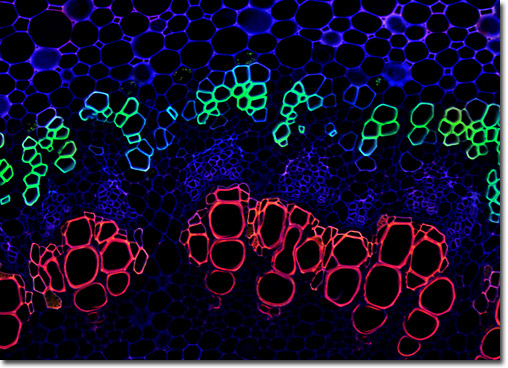Plant Tissue Autofluorescence Gallery
Rubber Tree Leaf

|
The vast majority of natural rubber utilized for commercial purposes is acquired from Hevea brasiliensis, commonly known as the rubber tree. The tree is indigenous only to tropical and some subtropical areas of South America, and natives in these regions had been obtaining and utilizing the milky white juice known as latex from them for many years before the arrival of the first European explorers. These explorers brought samples of the unusual material back with them to Europe, where it was at first considered an oddity, but was then found to have a variety of practical applications. Early South Americans were able to produce waterproof bottles from latex, but the Europeans had little success with this practice initially. In 1770, however, a British chemist, Joseph Priestly, discovered that rubber was capable of erasing pencil markings, and later in the same century another British chemist, Charles Macintosh, began producing waterproof raincoats with the material, giving birth to the rubber industry, which has expanded steadily ever since. View a larger version of this digital image. |
 |
 |
 |
 |
 |
 |
 |